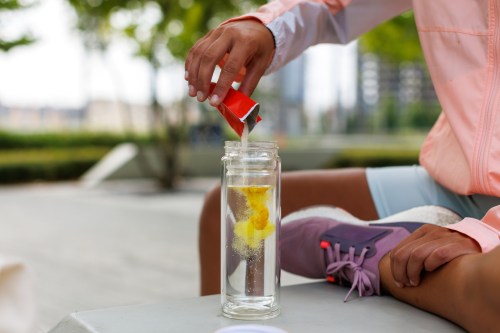Our editors independently select these products. Making a purchase through our links may earn Well+Good a commission
6 Nutritious Fruit Scraps You’re Definitely Not Eating but 100% Should
Reilly Brock, the content manager at Imperfect Foods, gives ideas for using fruit scraps in creative new ways.

Remember the onset of the pandemic, when we were all prolonging our trips to the grocery store as much as possible? One of the positive mindset shifts was getting scrappy in the kitchen—literally. Cooking with vegetable and fruit scraps took on even greater importance than before as we all collectively worked to stretch the usage of everything in the crisper.
Experts in This Article
Reilly Brock is the associate creative director at Imperfect Foods, a food delivery company with the mission of eliminating food waste and making healthy food more accessible.
Maybe you figured out that carrot tops could be blended into pesto and kale stems can be pickled with herbs. You might even fancy yourself a cooking-with-veggie-scraps master. But cooking with scraps certainly isn’t limited to vegetables. Chances are, there are fruit scraps you could be doing more with, too—and your body will benefit when you do it.
Reilly Brock, the associate creative director at Imperfect Foods, says there are some common fruit parts that end up in the compost bin that are completely nutritious. He’s an expert at using peels, tops, cores, and rinds in ways you probably haven’t thought of before. Fortunately, he isn’t shy about sharing his intel.
These are the fruit scraps you should always eat
1. Strawberry tops
There’s actually no need to give your strawberries a trim—you can eat the entire fruit, leaves and all. In fact, just like the rest of the fruit, strawberry leaves are high in vitamin C and antioxidants. Still not into noshing on them? Instead of throwing them out, Brock recommends dropping the tops in a pitcher of water to add a little flavor. You’ll feel fancy *and* stay well-hydrated.
2. Kiwi skins
Fun fact: Kiwi skin is even higher in fiber, vitamin C, and antioxidants than the fleshy part of the fruit, so biting into it as-is instantly ups the health benefits you’re getting. If you can’t stomach the idea of biting into a hairy brown fruit, add the clothed-kiwi to your blender when making smoothies. All blended up, you won’t even notice it wasn’t peeled.
3. Citrus peels
One of the easiest ways to use citrus peels is in other dishes. Harvest the zest from citrus with a high-quality Microplane ($17) to add brightness to meat dishes, roasted veggies, and even leftovers. “To enjoy the flavor of citrus peels, combine their zest with salt to create an aromatic citrus salt for seasoning your favorite foods,” says Brock. Already a zester? Brock says you can also boil the peels in a simple syrup to make candied peels. “It’s a fun snack or dessert garnish.”
4. Pineapple cores and peels
Save your pineapple cores and peels to make tepache, a fermented Mexican drink that’s good for your gut. Just like the rest of the pineapple, the core is full of fiber and bromelain, an enzyme that helps aid the digestive process. It’s just a bit rougher than the rest of the fruit and doesn’t taste as sweet—but combined with the other ingredients used to make the tepache definitely changes that.
“It’s really easy to make and is incredibly refreshing,” Brock says of the drink. All you need to make it is water, piloncillo (a raw form of pure cane sugar) or brown sugar, and pineapple parts. This recipe breaks down exactly how to make it.
5. Apple cores
Think you know how to eat an apple? Think again. According to research, the bulk of an apple’s good bacteria is found in its seeds. If you skip eating the core, you miss out on some major digestive help.
“Take a page out of zero-waste chef Anne-Marie Bonneau’s book and make your own apple scrap vinegar,” Brock says. Besides apple cores, the only other ingredients you need are a tablespoon of sugar and dechlorinated water. Several days of fermentation later and you have a homemade wellness staple that can be used in a whole slew of ways.
6. Watermelon rinds
You can absolutely eat raw watermelon rind. It’s crunchy, kind of like a cucumber, if not bursting with flavor. But did you know you can pickle it? “Pickled watermelon rind is a delightful snack and side dish that’s a great contrast for heavy or saltier main dishes,” Brock says. You can do this by cutting the rind into cubes and boiling it with apple cider vinegar, water, sugar, ginger, salt, and spices before jarring it. (This recipe shows exactly how to do it.)
When it comes to experimenting with any scraps, what’s most important is the willingness to simply try it out. If you have an open mind, you’ll find ways to use all sorts of would-be food waste—cores, rinds, peels, and all.
Feeling inspired? Watch the video below to see how to make zero-waste almond shortbread cookies:
Oh hi! You look like someone who loves free workouts, discounts for cult-fave wellness brands, and exclusive Well+Good content. Sign up for Well+, our online community of wellness insiders, and unlock your rewards instantly.










